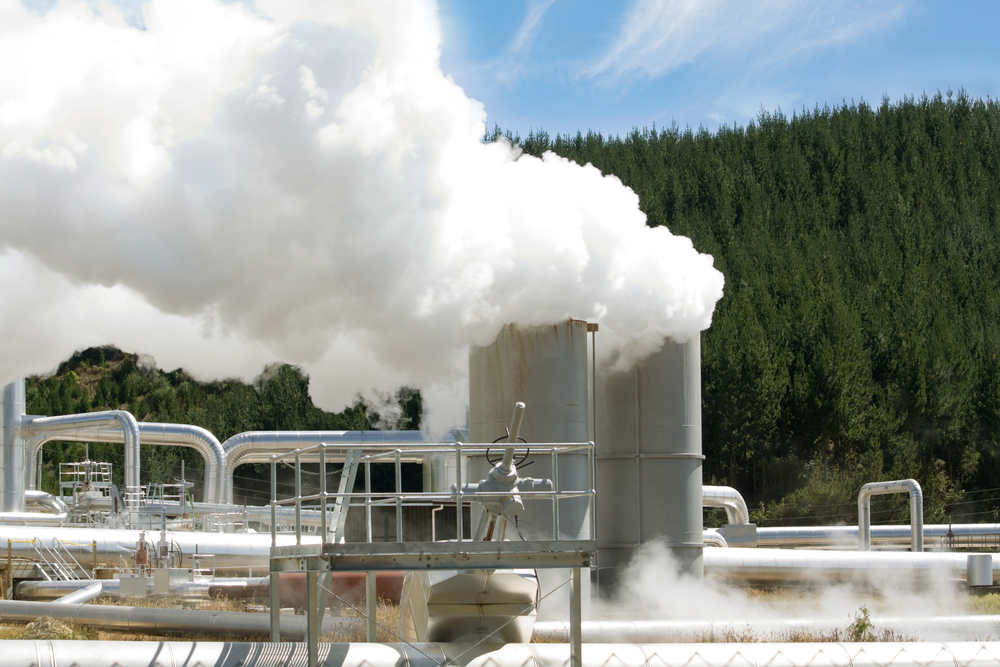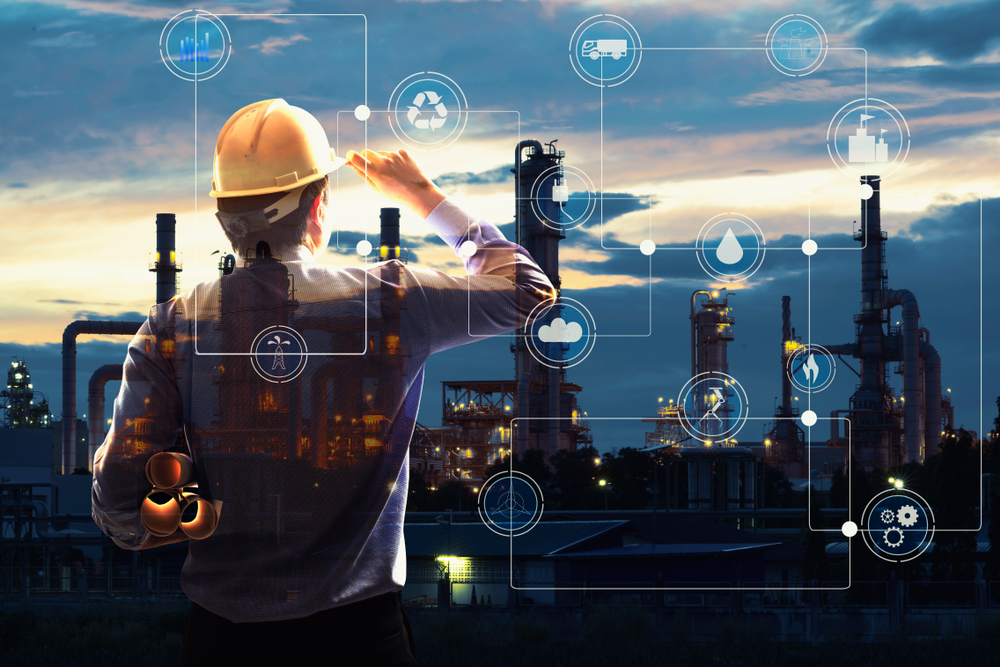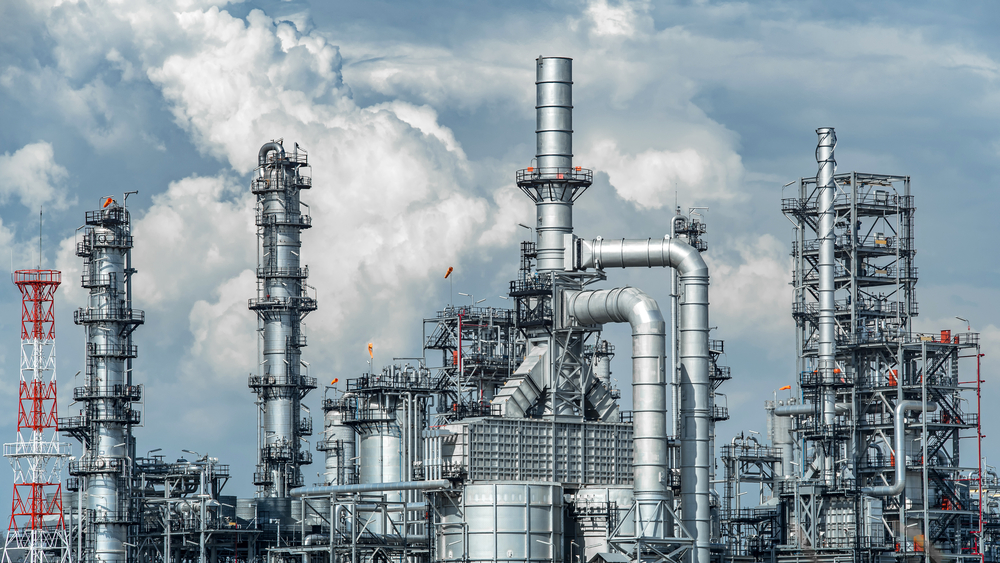
Monitoring and reducing air emissions have become paramount in our increasingly environmentally conscious world. Not only is it essential for safeguarding the planet, but it’s also crucial for your business’s sustainability and compliance with regulations. Highmark Analytics helps you explore the world of air emissions monitoring and why it matters for your company.
Why Air Emissions Monitoring Matters
Air emissions monitoring is the process of tracking and measuring various pollutants and gases released into the atmosphere by industrial, commercial, and residential activities. These emissions can significantly impact the environment and public health, making it essential to keep them in check. Let’s take a closer look at why air emissions monitoring matters:
Environmental Protection: At its core, air emissions monitoring is about protecting our environment. By closely tracking and managing emissions, we can identify and mitigate sources of pollution, which ultimately leads to a cleaner, healthier planet.
Regulatory Compliance: Many countries and regions worldwide have strict regulations governing air quality and emissions. Failing to comply with these regulations can result in fines, legal consequences, and reputational damage. Air emissions monitoring is a proactive way to ensure your business stays within the bounds of the law.
Public Health: The quality of the air we breathe directly affects our health. Pollutants released into the atmosphere can lead to respiratory diseases, cardiovascular problems, and other health issues. Monitoring air emissions helps mitigate these risks and protect public health.
Corporate Responsibility: Beyond legal requirements, air emissions monitoring is a powerful tool for demonstrating corporate responsibility. Consumers increasingly expect businesses to take action on environmental issues. You can enhance your company’s reputation and brand image by actively reducing emissions and sharing your efforts with your audience.
Measurement Techniques in Air Emissions Monitoring
Air emissions monitoring employs various measurement techniques to quantify pollutants accurately. These techniques are crucial for obtaining reliable data to guide your company’s environmental efforts. Let’s explore some common measurement techniques in more detail:
Continuous Emissions Monitoring Systems (CEMS): CEMS continuously measures emissions in real-time. They are often used in industrial settings, where precise and continuous monitoring is crucial for compliance and process optimization. CEMS can track a wide range of pollutants, including sulfur dioxide, nitrogen oxides, carbon monoxide, and particulate matter.
Stack Sampling: Stack sampling involves collecting samples of emissions directly from chimneys or stacks and analyzing them in a laboratory. This method is particularly effective for assessing specific pollutants in complex industrial processes. It provides accurate data for compliance reporting and process improvement.
Ambient Air Monitoring: Ambient air monitoring stations are strategically placed in urban and industrial areas to measure air quality in real-world conditions. They help assess the impact of emissions on the surrounding environment and public health. Common measurements include levels of ozone, particulate matter, carbon dioxide, and volatile organic compounds.
Remote Sensing: Remote sensing technologies have gained prominence in recent years. These methods, which include satellite and drone-based monitoring, offer a non-invasive way to detect emissions from a distance. They are especially valuable for assessing emissions from hard-to-reach or hazardous locations, such as forest fires or industrial accidents.
Emission Factors: Emission factors are mathematical equations that estimate emissions based on factors like fuel consumption, production rates, and process data. They provide a simplified yet effective way to estimate emissions when direct measurements are impractical or costly.
The Role of Data Analysis in Air Emissions Monitoring
Collecting data through monitoring is just the beginning. The true value of air emissions monitoring lies in analyzing and interpreting that data. Data analysis allows us to:
Identify Trends: By analyzing historical data, we can identify trends and patterns in emissions, helping businesses make informed decisions about process improvements and emission reduction strategies.
Detect Anomalies: Data analysis can reveal unexpected spikes or anomalies in emissions, which may indicate equipment malfunctions or process inefficiencies that need immediate attention.
Predict Future Emissions: Advanced data analytics can help predict future emissions based on current conditions and historical data. This forecasting capability is invaluable for proactive emission reduction planning.
Optimize Operations: Businesses can use emission data to optimize their operations, minimize waste, and reduce energy consumption, leading to cost savings and improved environmental performance.
Why Your Business Should Invest in Air Emissions Monitoring
Now that we’ve explored the importance of air emissions monitoring, measurement techniques, data analysis, and the impact on public health, let’s discuss why your business should consider investing in this crucial practice:
Environmental Responsibility: Beyond legal requirements, adopting air emissions monitoring is a tangible way to demonstrate your company’s commitment to environmental responsibility. In an era where sustainability matters more than ever, this commitment can enhance your reputation and attract environmentally conscious customers and partners.
Regulatory Compliance: Staying ahead of regulatory changes and ensuring compliance with emission standards is crucial. Non-compliance can result in legal consequences, fines, and damage to your company’s image. Implementing air emissions monitoring can help you proactively meet regulatory requirements.
Cost Savings: Air emissions monitoring can identify sources of emissions and inefficiencies in your processes. Addressing these issues can reduce energy waste and operational costs, ultimately improving your bottom line.
Competitive Advantage: Consumers are increasingly choosing environmentally responsible businesses. Promoting your emission reduction efforts can set you apart from competitors and attract a growing market of environmentally conscious customers.
Innovation Opportunities: Investing in emissions monitoring can drive innovation within your company. By seeking more efficient and sustainable processes and products, you can position yourself as an industry leader and seize opportunities for growth.
Take Action with Highmark Analytics
If you’re ready to take action and implement air emissions monitoring in your company, Highmark Analytics is here to help. Our expertise in environmental data analysis and monitoring solutions can guide you toward a greener, more sustainable future. We understand that implementing air emissions monitoring can be a complex and daunting task, but it’s a journey worth embarking on. Call us today to learn more.

At Highmark Analytics, one of the services we highly recommend is combustion analysis. However, this is not a term many individuals or businesses are familiar with. Here is more information that you should know about this service, including when it should be done, how frequently it should be completed, and specific terms you should familiarize yourself with concerning combustion analysis.
When Should a Combustion Analysis Be Done?
Determining the ideal timing for combustion analysis is essential to ensure accurate readings and effective adjustments. While performing the analysis, it is recommended to allow the boiler to operate for at least 15 minutes before taking any measurements, allowing the flame to stabilize. However, conducting the analysis during the fall or spring seasons may pose challenges, as the boiler may shut off based on temperature or pressure before the process is completed.
Considering these factors, the optimal time to perform a combustion analysis is during periods of heavy load, such as mid-winter when the heating demand is at its peak. This ensures that the boiler operates continuously and under typical conditions, providing reliable and representative data for analysis. By conducting the combustion analysis during this time, accurate adjustments can be made that help to optimize the boiler’s performance.
How Frequently Should a Combustion Analysis Be Completed?
The frequency at which a combustion analysis should be done varies. You may need to run this type of analysis on every thermal system or boiler in your commercial facility about once a quarter, whereas you need to run this on a home system about once a year. The frequency can vary depending on the size of the facility and the load of the boiler or thermal system. Additionally, for safety reasons, you should have an analysis completed every time you service a thermal system. Our team can work with you to help you determine the frequency at which a combustion analysis should be performed.
Important Combustion Definitions You Need to Understand
Combustion parameters are crucial in determining the efficiency and safety of boilers and burners. Let’s explore some key definitions and considerations related to combustion analysis. This will help you to better understand why combustion analysis is being done and the terms a professional uses.
Oxygen
The air used for burner combustion consists of approximately 78% nitrogen, 21% oxygen, and small amounts of argon and other gases. Adjusting the air supply to the minimum required to achieve optimal efficiency is essential. Insufficient air or excessive fuel results in a “lean” condition, reducing efficiency. Conversely, too much air or insufficient fuel leads to a “rich” condition, potentially causing sooting and high emissions, including carbon monoxide.
Carbon Dioxide
Carbon dioxide is a byproduct of combustion and is expressed as a percentage of the flue gas volume. When measuring carbon dioxide levels, it is crucial to consider the oxygen content. Ignoring oxygen levels could mask the presence of carbon monoxide in the flue gases. Burner manufacturers typically aim for 8.5% to 10% carbon dioxide readings in the flue gas. It’s important to note that carbon dioxide can form carbonic acid when combined with water, which may damage standard-efficiency boilers or chimneys.
Carbon Monoxide
Carbon monoxide is a dangerous byproduct of incomplete combustion. It is measured in parts per million (ppm) rather than as a percentage of flue gas. To illustrate how small a part per million is, consider that one part per million is equivalent to one day in 2,739 years or one inch in 16 miles. It is crucial to strive for carbon monoxide levels as close to zero as possible.
CO Air Free
“CO air free” is used when measuring carbon monoxide in flue gases. It refers to subtracting the excess air from the calculation to determine the actual carbon monoxide content in the flue gases. Sometimes, technicians are tempted to add more air to reduce carbon monoxide levels. However, adding excess air dilutes the carbon monoxide reading. The ANSI Z 21.1 standard sets the limit for CO air free in flue gases at 400 ppm. If carbon monoxide is measured without factoring in the air-free portion, it is referred to as “as measured” carbon monoxide.
Excess Air
Excess air is the additional air supplied to the combustion process to ensure safe operation. It acts as a protective measure, preventing fuel inefficiencies, increased carbon monoxide gases, and produced soot. Excessive air in gaseous fuels usually is around 15%, though liquid and solid fuels higher ranges. The higher the excess air, the more fuel required to produce required heat for the process.
Draft
Draft refers to the velocity of flue gases through the boiler. Excessive drafts can pull flue gases too quickly, reducing boiler efficiency. Conversely, low draft levels can damage the burner. The draft is slightly negative for Category 1 appliances, usually around -0.05 in. w.c. It is essential to consult the manufacturer’s specifications for draft requirements. Most condensing boilers have a positive flue and require a sealed vent.
Stack Temperature
Stack temperature indicates the heat transfer capability of the boiler. If the stack temperature is too high, it suggests that the burner is not efficiently transferring heat into the boiler. Various factors, such as dirty heating surfaces, over-firing, water-side scale buildup, excessive draft, or high water velocity inside the boiler, can contribute to high stack temperatures. On the other hand, if the stack temperature is too low, flue gases may condense and cause damage unless the boiler is specifically designed for condensing.
Ambient Temperature
Ambient temperature refers to the temperature of the combustion air for the burner. When using a combustion analyzer, it should be done in the environment where the combustion air is drawn, as close to the burner as possible. Testing performed outside the combustion air source can yield false readings. If the boiler draws air from the boiler room, calibrate the analyzer in the combustion air duct that feeds the burner. In cases where there are multiple boilers in a room, some using outside air and others using room air, testing needs to be performed twice, once for each type of burner.
What is Highmark Analytics’ Role in Combustion Analysis?
At Highmark Analytics, our team is here to sell, service and calibrate equipment used for testing boilers and thermal systems, from your home to steam boilers for facilities and piston-driven engines in commercial settings. Our team evaluates gas combustion equipment used in these settings, calibrates and retests to ensure accuracy and functionality during instrument field use. Call us to learn more and to get started today.

Gas detectors are designed to alert you and your staff members to the presence of gas. This may be caused by faulty equipment or damage to your incoming gas line. Gas can be odorless, or it may have a rotten egg scent, but, in a busy environment, such as a warehouse or commercial space, it can be easy to miss the scent of gas if it is associated. Exposure to gas can cause your staff to become sick, faint, or even die. As such, you must have gas detection equipment to ensure your employees are safe and that there are no gas leaks in your building.
If you want to purchase gas detection equipment for your commercial business, one of the questions you may have is whether a portable or fixed detector is right for you. Below, we will describe the differences between each type of detection equipment, and list the pros and cons, so you can make an informed and educated decision regarding which option may be right for you.
What Is a Fixed Gas Detector?
Fixed gas detectors work similarly to smoke detectors. They are located in one fixed area. When the detector detects gas presence, it will sound an alarm and may flash lights if you have a light detection system. This alerts you to the fact that there is a gas leak present. This allows you to shut down any equipment that utilizes gas and turn the valve on your incoming gas line off to prevent further gas from leaking into your space until a professional can determine where the leak is and how to repair it. This also allows you to evacuate your business so no one suffers from any symptoms related to gas exposure, including death.
What Are the Benefits of a Fixed Gas Detector?
Learning the benefits of a fixed gas detector can help you decide if this type of detector is ideal for your situation. One of the benefits of fixed gas detectors is that they are in a fixed location and can alert individuals to gas leaks 24 hours a day, seven days a week. This type of alarm can also be used in conjunction with smart systems that may be able to shut down equipment or even turn off the incoming gas supply if the alarm sounds. Lastly, a fixed gas detector can be cheaper than purchasing your employees their own portable gas detector.
What Are the Downsides of a Fixed Gas Detector?
One of the biggest downsides of a fixed gas detector is that it can only detect gas coming toward its sensors or detection system. If gas is five meters or more away from the detector, your detector will probably not detect it. A fixed gas detector also only works if the power is on. If your power goes out, your gas detection system may not work. Lastly, just like smoke detectors, gas detectors must be regularly tested to ensure they function properly. If you do not test them, they may not work when needed.
What Is a Portable Gas Detector?
Portable gas detectors are very different from fixed gas detectors. While a fixed detector is adhered to a wall or piece of equipment and remains in one spot, a portable gas detector is worn on your employees’ clothing. The gas detector moves from location to location as your employee moves from location to location. A portable gas detector is primarily designed to be used in places without space to fit a fixed gas detector. The gas detector helps to ensure your employees are safe and that there are no gas leaks or high gas levels in their working area. This type of detector immediately alerts employees to high gas levels in a particular area, allowing them to safely exit the building and turn off the incoming gas supply to address the leak.
What Are the Advantages of a Portable Gas Detector?
The biggest advantage to a portable gas detector is that these types of detectors can be used in places where a fixed detector cannot be placed. This is ideal in small, tight spaces or if your employees work in a location you do not own. Portable gas detectors help to protect individuals and alert them to the presence of gas. They can also be tracked using GPS tracking, helping you to track where your employees are.
What Are the Disadvantages of a Portable Gas Detector?
The number one disadvantage of a portable gas detector is that it is only effective if your employees know how to use it properly. If your employees miss the alert or do not use the equipment properly, it will not work properly. Portable gas detectors must also be regularly tested and calibrated to ensure they work correctly. The final downside is that portable gas detectors only detect gas leaks in the area where an employee is. If an employee is not near the gas leak, the portable gas detector may not pick up on that leak.
Both portable and fixed gas detection equipment have their own unique uses and their own pros and cons. At Highmark Analytics, we know the importance of having the right gas detection equipment for your needs. We work hard to understand our clients and their needs, helping to ensure that we can meet the needs of our clients. We have over 20 years of experience in the industry and can help you with advice and guidance. When you are looking for gas detection equipment, let us help you find the ideal equipment for your needs. Call us now to get started.





